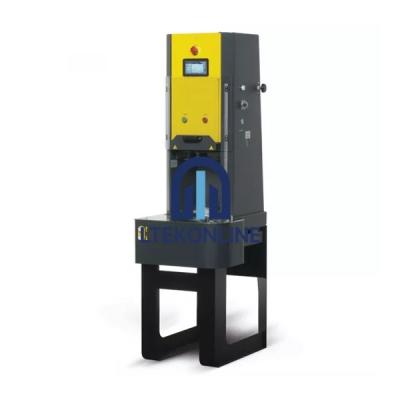Tenders Description & Specification for Gyratory Compactor
Gyratory Compactor
Gyratory compactors, used for the past twenty years all over the world, are the reference point in terms of user-friendliness combined with reliability and ergonomics, and they have been produced in hundreds of units. Gyratory technique basically consists in a compaction of a bituminous mixture contained in a cylindrical mould with the simultaneous action of a vertical static compaction and of the shearing action resulting from the rotation of the mould on its inclined axis. The compaction data is measured and recorded during the test.
Robust thus light high stiffness steel monocoque structure, incorporating pneumatic cylinder for vertical load application and electromechanical mechanism for the gyration system with exclusive mould rotation system, granting high accuracy and repeatability of test results, together with stiffness and angle stability values widely within the limits defined. Touch-screen user-friendly integrated control panel, large display showing the test graph in real time, on board firmware including 12 languages. Possibility to remote test control by PC.
Technical Specifications:
Compacted specimen size: 150 and 100 mm dia.
Preset to 1.16° internal angle
Preset to 0.82° internal angle
Speed of gyration: adjustable from 20 to 60 rpm
Number of gyrations: adjustable up to 999
Internal angle of gyration: Adjustable from 0.70 to 1.40 °.
Communication with PC: RS 232 connections
Test programmable either by number of gyrations or specimen height
Sample height: 80 to 200 mm (150 mm)-50 to 125 mm (100 mm)
Consolidation pressure: 80 to 800 kPa (150 mm) -160 to 1400 kPa (100 mm)
Internal memory: more than 200'000 tests
Power rating: 1000 W
Dimensions (including extruder bench, wxdxh): 502x753x1940 mm
Dimensions (wxdxh): 469x615x1130 mm
Weight approx.: 100 kg.
Ltekonline are the manufacturers of Gyratory Compactor used to demonstrate engineering principles in Engineering Colleges, Engineering Schools and Asphalt Mix Testing for Engineering Teaching Lab in Universities
